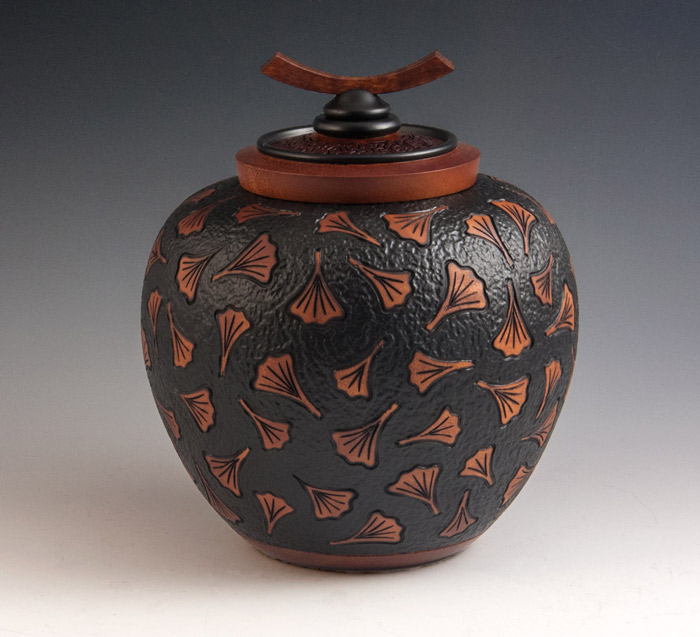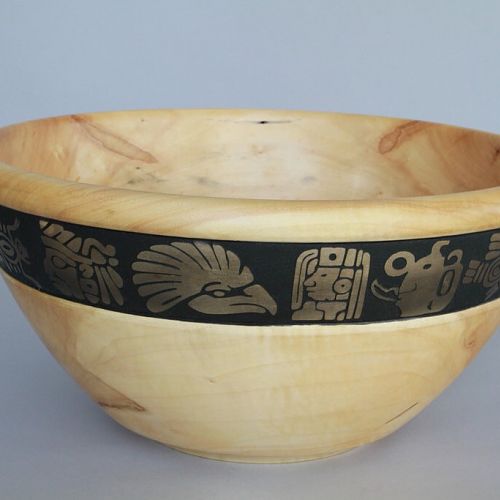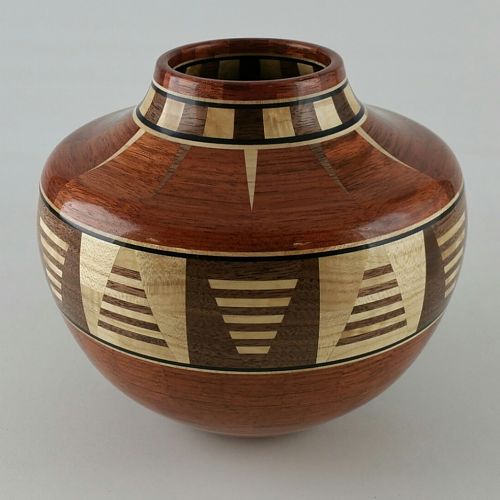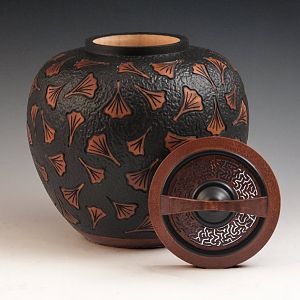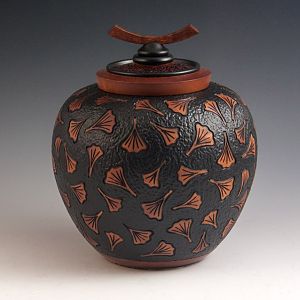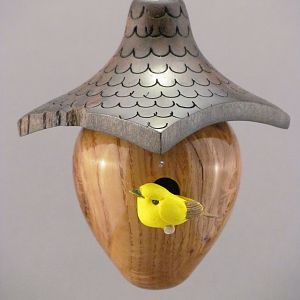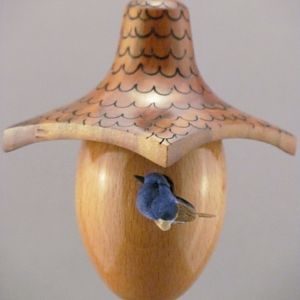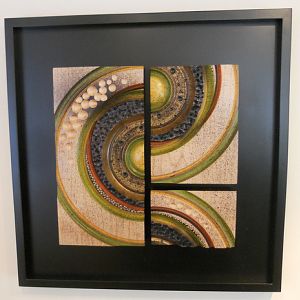Ive been playing with several new forms lately that stay within the oriental theme I like to work with. One of my favorite ceramic oriental vessels is the classic ginger jar. Ive turned several small prototypes but found I was still searching for the most eye appealing form. I tried yet another variation which resulted in this piece. As soon as I rough turned it, I knew I was on to what I was looking for. I completed the outside adding a groove close to the base to separate the textured field that was to be added above the base. The vessel was then hollowed to walls. The lid was a bit complicated because it was small. It had to be sturdy around the rim yet 1/16 thick for the pierced center.
Following the turning I branded the two different sized ginkgo leaves in a random pattern on the outside. The leaf veins were burned individually. The entire field was then textured, except for the leaves and area below the groove at the base.
The entire vessel and lid were then airbrushed with a light TransTint dye to add the warm golden brown color to the base, leaves, lid and oriental themed handle. I then painted the field around the leaves with black gesso. The black ring around the lid and handle mount was also painted black. The entire piece was then sprayed with a matte finish to ensure a uniform low gloss reflectivity. This also seals and protects the dye and gesso finish.
The piece is 6 tall including the lid and 5 in diameter. It, along with 2 others, are currently on display in del Mano Galleries online Turned Wood Small Treasures Exhibit.
All comments and critiques are welcome.

